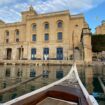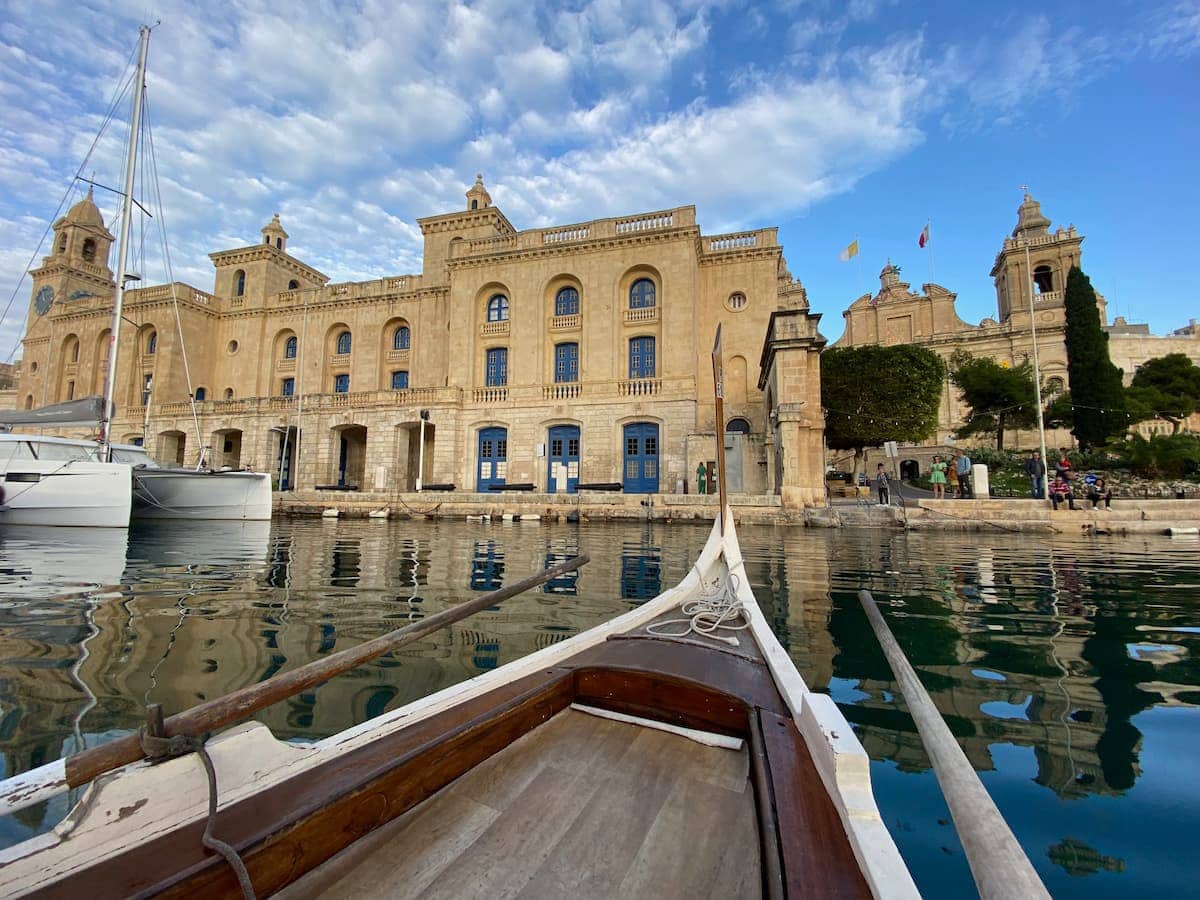
Go World Travel is reader-supported and may earn a commission from purchases made through links in this piece.
Valletta is the historic capital of Malta, a beautiful, rugged island in the Mediterranean. Despite its proximity to Sicily and the Italian mainland, it is proud of its independent quirks and traditions.
Home to a little over 500,000 people, it is famous for beautiful architecture, scenic cliffs, breathtaking coastline and dive sites. It recently played host to some slightly unusual guests…velociraptors…along with the cast of Jurassic World Dominion.
Best Tips & Tools to Plan Your Trip
The only problem with visiting Valletta for the weekend is that you won’t have anywhere enough time to do everything that you want to do. I was there for 48 hours and crammed as much in as I could, but hardly scratched the surface.
With weather that rarely drops below 15oC, it’s perfect for a winter sun weekend break, or you can incorporate the city break itinerary into a longer beach vacation.
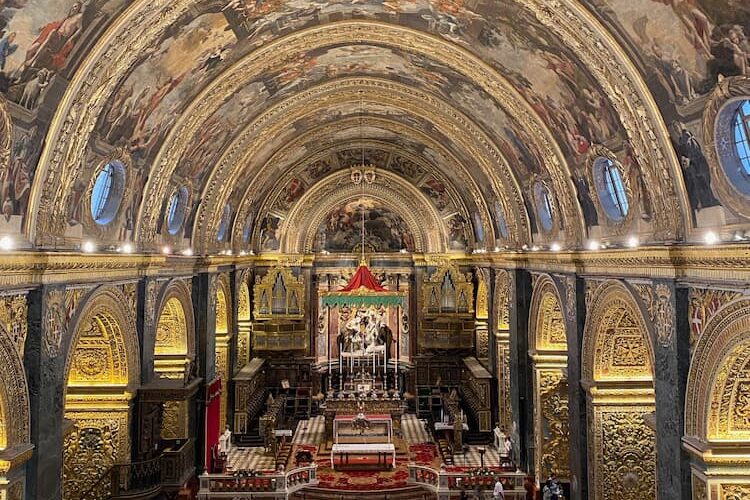
What to Do in Valletta
Valletta is a rich overlapping tapestry of historical wonders, dating from 4,000 BCE up to the present day. From my perspective, the World War II historical attractions were a particular draw.
Start at the Lower Barrakka Gardens for a mid-morning coffee and views out over the Grand Harbour. From there, you can walk along the walls towards the Upper Barrakka Gardens, which is home to the Lascaris War Rooms, War HQ and Saluting Battery.
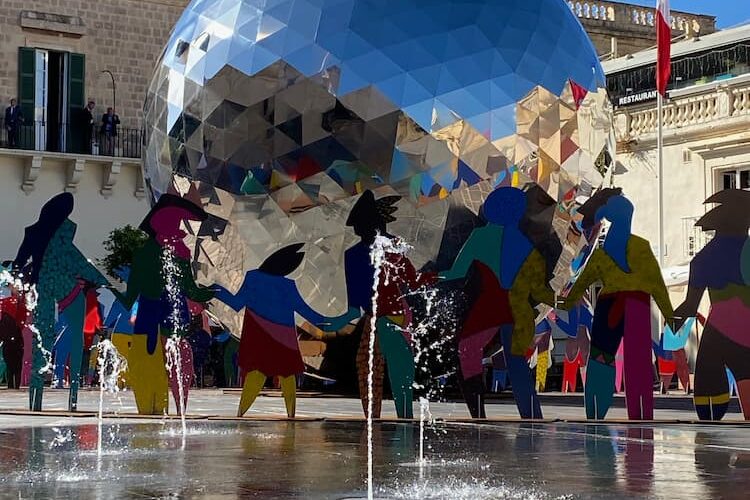
The Lascaris War Rooms & War HQ were particularly fascinating. The War HQ was the former headquarters of the allied resistance in World War II, initially using tunnels first dug by Crusaders and subsequently expanded by the Royal Engineers during night-time excavations, initially by hand. Many of the tunnels are still inaccessible, but a few tunnels and rooms have been opened for you to explore.
Its bigger sister, the Lascaris War Rooms, took over the mantle as the primary World War II headquarters for allied military operations in the Mediterranean.
The War Rooms were famously used as the base of operations for the allied landings in Sicily, still the largest amphibious assault in history, overseen by General Eisenhower in person.
Following World War II, both the War Rooms and War HQ were used by NATO until 1977, so the War Rooms and War HQ boast an interesting mix of World War II and Cold War historical relics.
The War HQ is only accessible by guided tour, so make sure to book in advance (booking can be made at the Saluting Battery ticket office). For €40, you will be given a multi-day ticket granting you access to the War HQ, War Rooms and Saluting Battery.
The Saluting Battery offers unparalleled views over the Grand Harbour, and it is worth catching the pomp & circumstance of the canon firing at noon or 16:00.
You might find a coffee or snack is required after your cultural morning, and there is a small coffee shop in the grounds of the Upper Barrakka Gardens that fits the bill nicely. From there, you can catch the Barrakka Lift for the 58m vertical journey from the top of the walled city down to the Lascaris Wharf (tickets are €2 return).
Whilst you can catch a fast ferry from Lascaris Wharf across the Grand Harbour towards the Three Cities, I recommend catching a small traditional gondola boat, that takes 5 – 6 people at a time. It costs €2 single, payable to the captain on arrival.
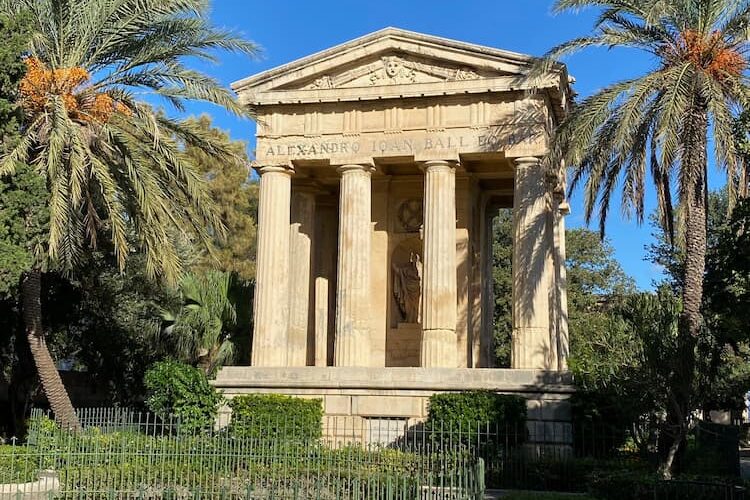
You could very easily devote a couple of days to exploring the Three Cities, but I found I only had a few hours to spare. That was more than enough time to walk through the Vittoriosa Marina – ogling the superyachts on my way – to Fort St Angelo.
The view from the ramparts of Fort St Angelo provided a nice counterpoint to Valletta with unparalleled views back to the mighty city across the Grand Harbour. I found a pathway running alongside the base of the ramparts out to the shoreline, which afforded unrestricted contemplative views.
Back in the centre of Valletta, you really must visit the St John Co-Cathedral, which is a curious juxtaposition of imposing, but modest, Templar architecture and stunning internal decorative embellishments. Be sure to get an audio guide and don’t forget to visit the Caravaggio’s on display.
Slightly outside Valletta, the Hal Saflieni Hypogeum is a unique subterranean wonder of the Megalithic era, comprising passageways and burial chambers. It was one of the first sites recognised in Malta by UNESCO. The number of tourists who are allowed to visit are strictly limited, and you will need to book tickets weeks or months in advance to avoid disappointment.
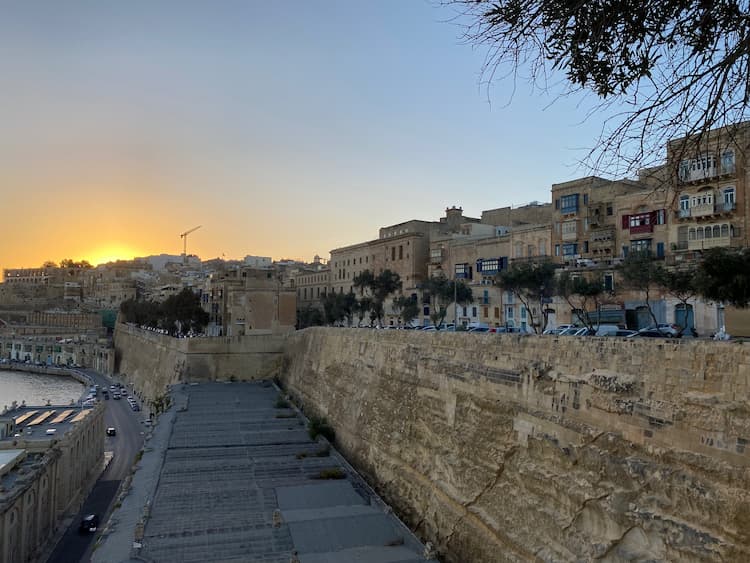
Where to Stay in Valletta
Valletta is not short of beautiful boutique hotels catering for all needs and budgets.
I stayed at the Barrister Hotel, which was an excellent mid-range boutique hotel a 5-minute walk from the centre of Valletta. The room was spacious, well stocked (including free mini bar and Nespresso Coffee machine) and the staff could not do enough to ensure my comfort and enjoyment.
For a more upmarket option, try the 66 Saint Pauls which offers guests the opportunity to enjoy their sumptuous subterranean spa and rooftop plunge pool.
Where to Eat in Valletta
One of my favourite things to do when visiting a new city is to go on a walking food tour of the city. To me, it is the best way to get a literal and metaphorical taste of the place. And Valletta did not disappoint.
I booked on the Valletta Street Food Cultural and Walking Tour which was excellent and did exactly what it said on the tin – a perfect mix of culture, sightseeing and food. Be warned – you will not need breakfast before the 10am start…the tour unashamedly packs in a day’s worth of eating in 3 hours.
For a traditional Maltese lunch snack, head to Piadina Caffe, nestled on a side street adjacent to St John’s Co-Cathedral for a toasted piadina (wrap filled with your choice of filling), washed down with a fresh orange juice and a zingy ginger shot.
For dinner on my first evening, I went to Tribe which offered a great mix of dishes taking their inspiration from Italy, Malta and Asia, with a funky vibe in the restaurant. I had their Eastern Olive Wood Tray (mezze platter) to start followed by a special lobster linguine, which was excellent.
On my last evening, I pushed the boat out and went to the 1 Michelin Star Ion Harbour. The food was quite simply sensational, the staff friendly and the atmosphere refined but without a hint of stuffiness.
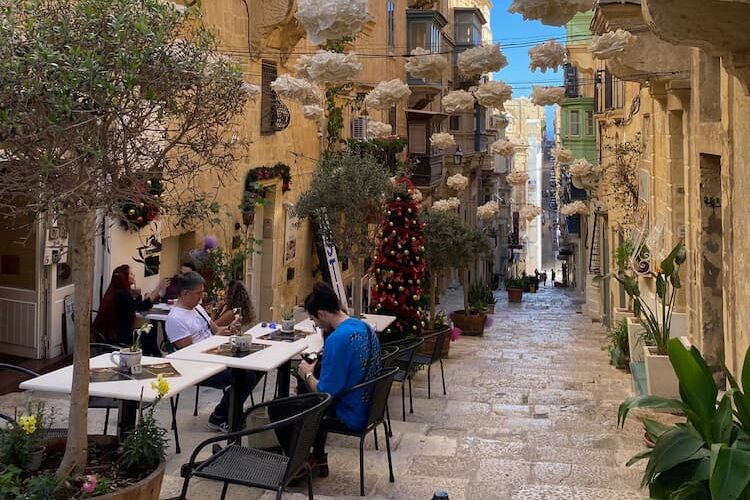
Where to Drink in Valletta
You are not short of choices to drink in Valletta, and many of them offer cheap Happy Hour cocktail offers, and San Giovanni Cafe – offering views over St John’s Co-Cathedral square – is no exception…the perfect spot for people watching.
Strait Street, running parallel to the main Republic Street, offers a plethora of drinking options and is making a name for itself as the bustling nightlife spot in Valletta.
Many bars along the street are small and spill out generously onto the street, making it all the more welcoming. Try the quirky Rootz Bar for excellent live jazz.
Where to Shop in Valletta
Valletta has all things to please all shoppers, from the high-end designer boutiques to small independent handicrafts to the usual tourist tat, and everything in between.
As the centre of Valletta itself is a relatively small area, laid out in a square block format, most shops are to be found on the main pedestrianised Republic Street (running roughly West to East from the Triton Fountain and Porta Reale, the main city gate, towards the sea at the other end) or on the parallel Merchants Street.
Travel Information
What currency do they use?
Euro
What language do they speak?
Maltese, but everyone speaks English
How much should I tip?
Tipping is customary and anywhere between 5% – 10% would be the expected tip.
How should I get around?
Valletta is best viewed on foot, so lace up your comfortable trainers and get exploring…! Taxis are available but are expensive – they are supposed to charge on the meter, but many will just offer you a price (over the odds) and expect you to either pay or negotiate.
What’s the best view in Valletta?
At sunset, aim for the Lower Barrakka Gardens or the Saluting Battery for a view out across the Grand Harbour. If you are at the Saluting Battery for 16:00, you will also catch the afternoon firing of the canon (if you missed the lunchtime firing at noon).
For an alternative view back across the Grand Harbour to Valletta, catch a traditional gondola water taxi from Lascaris Wharf (easily accessed by taking the Barrakka Lift from the Saluting Battery) to Vittoriosa and walk up to Fort St Angelo, or skirt alongside its lower walls adjacent to the marina to sit on the rocks on the seashore under its imposing ramparts.
Insider tip?
The buses are very cheap and frequent. If you are travelling from the airport to the centre of Valletta, catch the X4 from outside the terminal (around €2 single), which will take you to the bus station by the Triton Fountain outside the Porta Reale (the main city gate).
Inspire your next adventure with our articles below:
Author Bio: Tom is a freelance travel journalist based on Jersey in the Channel Islands. His passion is getting off the beaten track to explore places that are misunderstood or not on the average traveller’s radar. He loves immersing himself in the local culture so that he can provide readers with an informed narrative about the local quirks of everyday life.
- Top 10 Things to Do in Ireland - April 25, 2024
- How to Get Around in Sydney: A Local’s Guide to Traveling Around Sydney - April 24, 2024
- The Low-Key Magic of Ghent, Belgium - April 22, 2024

